


PHYSICIANS
Lorem ipsum dolor sit amet, consectetur adipiscing elit. Nam maximus vehicula lacus a tincidunt. Nunc pharetra lectus diam, vel tincidunt est pellentesque non. In in nulla sit amet turpis aliquet blandit vitae a leo.AFFILIATIONS
Lorem ipsum dolor sit amet, consectetur adipiscing elit. Nam maximus vehicula lacus a tincidunt. Nunc pharetra lectus diam, vel tincidunt est pellentesque non. In in nulla sit amet turpis aliquet blandit vitae a leo.TREATMENTS
Lorem ipsum dolor sit amet, consectetur adipiscing elit. Nam maximus vehicula lacus a tincidunt. Nunc pharetra lectus diam, vel tincidunt est pellentesque non. In in nulla sit amet turpis aliquet blandit vitae a leo.SPECIALTIES
Lorem ipsum dolor sit amet, consectetur adipiscing elit. Nam maximus vehicula lacus a tincidunt. Nunc pharetra lectus diam, vel tincidunt est pellentesque non. In in nulla sit amet turpis aliquet blandit vitae a leo.CONDITIONS
Lorem ipsum dolor sit amet, consectetur adipiscing elit. Nam maximus vehicula lacus a tincidunt. Nunc pharetra lectus diam, vel tincidunt est pellentesque non. In in nulla sit amet turpis aliquet blandit vitae a leo.PATIENT RESOURCES
Lorem ipsum dolor sit amet, consectetur adipiscing elit. Nam maximus vehicula lacus a tincidunt. Nunc pharetra lectus diam, vel tincidunt est pellentesque non. In in nulla sit amet turpis aliquet blandit vitae a leo.Heart Conditions
Chronic Venous Insufficiency
Chronic venous insufficiency (CVI) is a condition that causes blood to pool or collect in the leg’s veins, making it difficult for blood to return to the heart from the legs. This pooling is also known as ‘stasis’
What causes chronic venous insufficiency?
- Veins function to return blood to the heart from the body organs. Blood must flow upward from the veins in the legs. Both calf muscles and the muscles in the feet need to contract with each step to squeeze the veins and push blood upward. The veins contain one way valves that help keep blood flowing upward. CVI occurs when there is a blood clot in the deep veins of the legs, a disease known as deep vein thrombosis (DVT)
- Pelvic tumors, vascular malformations A congenital (present from birth) defect in the vein’s valves
Failure or weakening of the vein valves leads to inability to move blood upward against gravity and leads to sluggish blood flow out of the veins
What are the symptoms of chronic venous insufficiency?
Symptoms of chronic venous insufficiency include:
- Swollen legs and ankles most noticeably after extended periods of standing
- Leathery skin on the legs
- Restlessness, fatigue or achiness in the legs
- New varicose veins (swollen veins visible through the skin)
- Venous stasis ulcers
IF CVI remains untreated, the pressure and swelling continue until the tiniest blood vessels (known as capillaries) burst. The overlying skin takes on reddish brown color and is at risk for being broken if bumped or scratched
How is chronic venous insufficiency diagnosed?
Your doctor can diagnose CVI by performing a complete medical history and physical exam including a leg exam. Vascular Ultrasound is used to examine blood circulation in the legs. During the test, a small transducer (hand held wand) is placed on skin over the vein to be examined. The transducer emits sounds waves that will bounce off the vein. The sound waves are recorded and translated into an image that can be displayed in real time on a monitor
How is chronic venous insufficiency treated?
CVI is most treatable in its early stages. Strategies include lifestyle changes, medication, and medical procedures or surgery. The goal of treatment is to reduce blood pooling and prevent leg ulcers
Lifestyle changes that may help relieve your symptoms include:
- Wear compression stockings
- Avoid standing or sitting for long periods of time
- Maintain a healthy body weight
- Exercise regularly
- Elevate your legs while sitting and lying down
- Practice good skin hygiene
You may also be prescribed medication, including:
- Antibiotics to clear skin infections
- Medicated wraps and creams
- Medication to prevent blood clots from forming
More severe cases may require a medical or surgical procedure, including:
- Endovenous thermal, ablation and sclerotherapy
- Valve repair surgery
- Vein ligation and stripping
- Vein bypass








